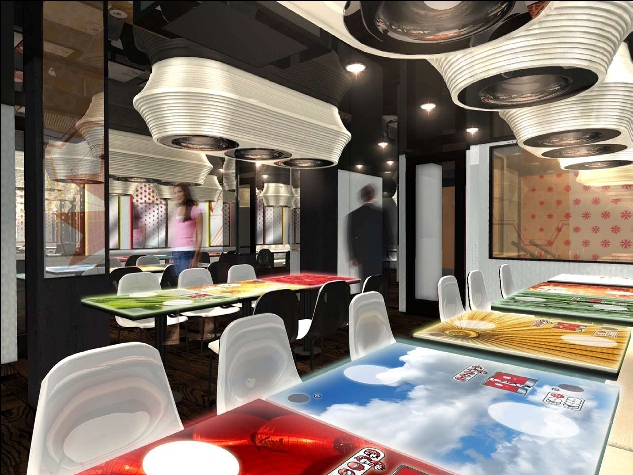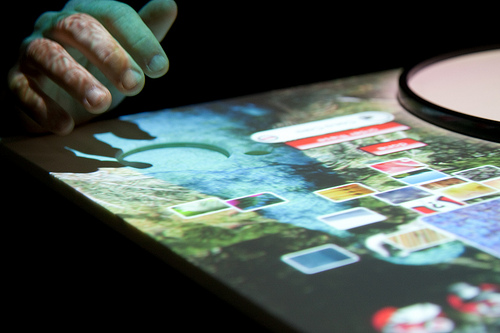
Inamo restaurant in London is using a new way to attract customers, with the world’s first interactive ordering system using overhead projection technology: an ‘e-table’. The aim of this is to give the diner control over the dining experience.
Diners sit at a table, and rather than use a paper menu, they place their order through a food and drinks menu that is projected onto the table surface. As well as ordering food, diners can change their table cloth, browse food, play games, request and review the bill, look for things to do in London, and order a taxi.
The table itself is not touch sensitive, there is a small trackpad at the bottom right hand side that is used like a mouse to navigate the cursor around.
So with the ever growing popularity of large touch screens, why did the creators choose a trackpad?
- From a tactile perspective, using a touch pad reduces the possibility of dirt causing problems. Although diners can still get the touch pad dirty, it’s a much smaller area to keep clean.

Touchpad on the interactive table - Touch screens can also have problems with screen coverage, users hands obstructing the view of what is actually happening. Using a touch pad also overcomes this potential issue.
There are a few things that could be done to enhance the user experience from my point of view:
- Technology set up: projecting onto a table surface will work great in the evening, when it is dark. During the day this is not the case. It is difficult to see the projected images during lunchtime, and diners are left squinting at tables as the projection is faint. This would mean that a diner with poor vision will find the task extremely difficult. Creating booths for diners and therefore controlling the light pollution would abate this issue
- The user interface side: having a much greater surface area to your average monitor, means it’s easy to lose track of where your cursor is on the table. It’s not only the size that causes a problem,but findingyour cursor on a background with not enough contrast also proves difficult and diners are left hunting for the cursor. In particular, this could cause problems for anyone with colour blindness, or any visual impairment.
- Another user interface enhancement: when choosing items, the icons to select are designed to move around a bit on the screen. Not a huge amount, but almost as if they are dancing. This could put off anyone with mobility problems, visual impairment or cognitive difficulties.
Overall, Inamo provides a novel and quirky experience with the use of an interactive ordering system, and I believe the Battleships game is a must. This novel experience could be easily rolled out to a larger proportion of the general public by considering accessibility in the user interface design.




